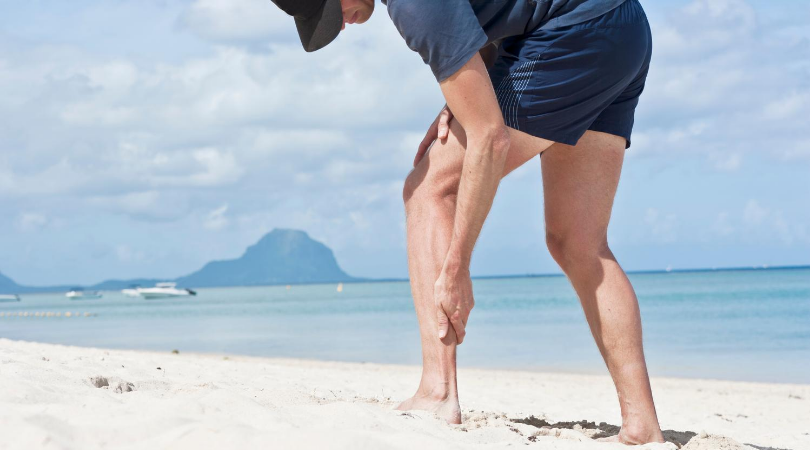How To Decipher Good Pain & Bad Pain For Runners

Runners get injured. Runners get injured a lot! Studies show that up to 50-80% of runners are injured every year. So as a physiotherapist I think it is crucial for the longevity of your running career that you understand the different types of running pain. Too many times has a runner limps into a physiotherapy clinic complaining of an injury that has been ongoing for months. As a result, this means it’s harder to get rid of when it could have been very easily managed in the beginning. So what is good pain and bad pain for runners?
Good Pain & Bad Pain For Runners (DOMS)
Let’s start off with delayed onset muscle soreness (DOMS) which can be considered good pain. You will experience DOMS after a hard session which involves heavy lifting, explosive movements, running hills or any increase in load that the muscles are not used to. I call this good pain because this is the body’s way of building stronger muscles. Here are the characteristics of DOMS.
- The pain comes on 24-48 hours after the strenuous activity.
- The location of the pain is generally wide-spread in the muscle (not your joints).
- The soreness resolves anywhere between 2-4 days.

Tendon pain
This may require an accurate diagnosis from a physiotherapist because it too will react to an increase in load. In most cases this is a slow build up and before you realize, you have had increasing difficulty for 3-4 weeks. Therefore, this is considered bad pain and can be quite difficult to manage once it is past the acute stage. Here is how you can differentiate from other type of pain:
- The location is on the tendon & is very localized.
- Symptoms reduced after the ‘warm up phrase’, then worse later in the day & worse the next morning.
- Has been in response to a quick build-up in running intensity or volume.

Joint & Ligament pain
Not to make this blog all doom & gloom but yes this is also bad pain. However, runners are usually onto this type of pain quicker then tendon pain but here are some typical signs:
- Can be trauma based. For example a rolled ankle or falling on the trails.
- Will typically increase in pain throughout a run.
- Will sometimes present with swelling or stiffness within a certain joint.

I hope this helps clear things up. There are also arthritic pains and other specific pains that fall outside of these categories, but this will help clear up 90% of the issues you are facing.
Relevant Blogs:
Relevant Podcast episodes:
- Pain Science 1: Explaining Pain
- Pain Science 2: Understanding Chronic pain for runners
- Addressing common running misconceptions 1: Pain
